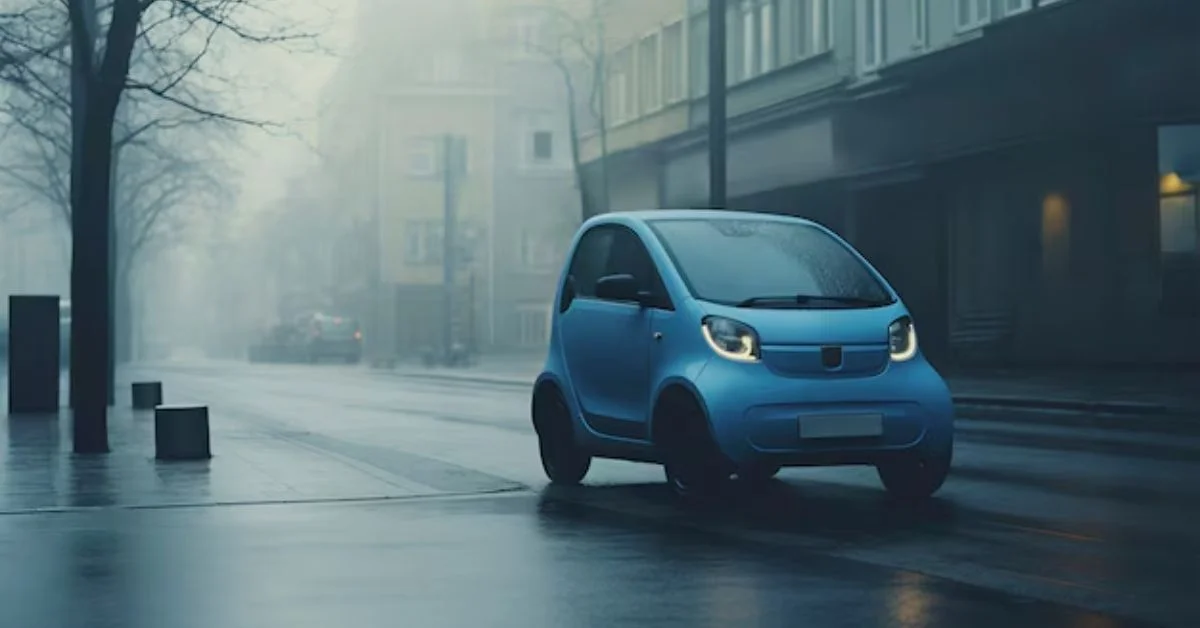The Tata Nano, often referred to as the world’s cheapest car, stands as one of the most fascinating endeavors in automotive history. Launched with the vision of providing affordable mobility to millions of people in India, the Tata Nano represents far more than just an inexpensive mode of transportation. It symbolizes a bold and innovative step towards democratizing car ownership, making it accessible to a significant portion of the population who previously could only dream of owning a car.The Tata Nano, as chronicled in https://guia-automovil.com/2019/08/01/tata-nano, stands as a testament to innovation and ambition in the automotive industry.
From its initial spark of curiosity to its eventual challenges in the marketplace, the Tata Nano’s journey is a captivating tale of aspiration, ambition, and innovation. This article delves deep into the car’s unique features, market reception, and its ongoing influence on the automotive industry, particularly in the realm of budget cars. We will also explore the lessons learned from the Tata Nano’s experiences, which continue to inspire discussions about affordable mobility solutions.
The Vision Behind the Tata Nano
The Tata Nano was conceived by Ratan Tata, the chairman of Tata Motors, with a clear objective: to create a vehicle that was safe, affordable, and suitable for the masses in India. The idea was born out of the desire to provide an alternative to the millions of Indian families who relied on two-wheelers for transportation, often carrying entire families on motorbikes. The car was designed to cost less than Rs. 1 lakh (approximately $2,000), making it the most affordable car in the world at the time of its launch.
Tata Motors aimed to revolutionize the Indian automotive market by offering a car that was within the financial reach of the average Indian household. The idea was not just about producing a cheap car but creating a reliable and efficient vehicle that could replace the unsafe and uncomfortable modes of transport many families were using.
The Launch of the Tata Nano: A Media Sensation
When the Tata Nano was unveiled in 2008, it generated a global media frenzy. Its affordability and compact design made headlines worldwide, with automotive enthusiasts and industry experts eager to see how Tata Motors had managed to reduce production costs so drastically. The car featured a 624cc two-cylinder engine, a simple yet effective design, and minimal frills. Its lightweight body and basic features kept costs low, while still ensuring functionality.The Tata Nano, as chronicled in https://guia-automovil.com/2019/08/01/tata-nano, stands as a testament to innovation and ambition in the automotive industry.
However, the excitement surrounding the launch of the Tata Nano wasn’t just due to its price. The car’s innovative engineering solutions, such as its rear-mounted engine and optimized space utilization, attracted attention from around the world. People marveled at how Tata Motors had managed to meet safety and environmental standards while maintaining a price point far below that of any other car on the market.
The https://guia-automovil.com/2019/08/01/tata-nano article highlights how the Tata Nano represented a significant technological achievement, drawing interest from other automakers interested in producing low-cost vehicles. Many wondered if the Nano’s model could be replicated in other emerging markets around the globe.
Unique Features of the Tata Nano: https://guia-automovil.com/2019/08/01/tata-nano
Despite being the world’s cheapest car, the Tata Nano packed several unique features that catered to the needs of budget-conscious consumers. Some of its standout features included:
- Compact Design:
The Tata Nano was designed to be compact, making it ideal for navigating India’s crowded urban roads. With its small footprint, the car could easily fit into tight parking spots and maneuver through traffic, offering a practical solution for city dwellers. - Fuel Efficiency:
The Nano boasted impressive fuel efficiency, with a mileage of around 20-25 km per liter. This was a crucial selling point for consumers looking for a car that could offer low running costs, especially in a country where fuel prices are a major concern. - Low Emissions:
Despite its small engine size, the Nano complied with emission standards, making it an environmentally friendly option compared to older, more polluting vehicles on the roads. - Cost-Effective Manufacturing:
Tata Motors utilized innovative engineering and manufacturing processes to reduce the car’s production costs. This included simplifying the design, using cheaper materials where possible, and producing the car in large quantities to benefit from economies of scale. - Customization Options:
To appeal to a broader audience, Tata Motors offered several versions of the Nano, including base models with fewer features and premium versions with added amenities like air conditioning and power steering.The Tata Nano, as chronicled in https://guia-automovil.com/2019/08/01/tata-nano, stands as a testament to innovation and ambition in the automotive industry.
The https://guia-automovil.com/2019/08/01/tata-nano article points out that while the Tata Nano was a budget car, it did not compromise on essential safety features such as seatbelts and a strong body structure designed to protect passengers in the event of a crash.

Market Reception and Challenges: https://guia-automovil.com/2019/08/01/tata-nano
While the Tata Nano made a strong impression at its launch, it struggled to gain significant traction in the Indian automotive market. Despite the initial excitement, several factors contributed to its underwhelming sales performance.
- Perception as a “Cheap Car”:
One of the key issues that hindered the Nano’s success was the perception that it was a “cheap car.” While the low price was meant to be a selling point, many consumers saw it as a symbol of low social status. In India, where cars are often seen as a status symbol, owning a Nano did not carry the prestige associated with other vehicles. - Safety Concerns:
Although the Nano met safety regulations, there were several high-profile incidents of the car catching fire, which damaged its reputation. These incidents led to concerns about the car’s safety, even though Tata Motors addressed the issue by recalling and fixing the affected models. - Marketing Missteps:
The Nano was marketed primarily on its low price, which inadvertently reinforced the idea that it was a car for those who couldn’t afford anything better. A more aspirational marketing campaign might have helped change perceptions and appeal to a broader audience. - Competition from Other Models:
As the automotive industry in India evolved, several competitors entered the market with slightly more expensive cars that offered better features and performance. This made it difficult for the Nano to maintain its edge in terms of value for money. - Production Delays:
The Nano’s production was initially delayed due to protests at the factory site in Singur, West Bengal, forcing Tata Motors to shift production to a new location. This disruption delayed the car’s entry into the market, which may have dampened some of the initial excitement.
The Impact of the Tata Nano on the Automotive Industry
Despite its commercial struggles, the Tata Nano has had a lasting impact on the automotive industry. It sparked conversations about the possibility of creating ultra-low-cost cars and highlighted the challenges of balancing affordability with consumer expectations.The Tata Nano, as chronicled in https://guia-automovil.com/2019/08/01/tata-nano, stands as a testament to innovation and ambition in the automotive industry.
- Affordability and Innovation:
The Nano demonstrated that it is possible to design a functional and safe car at a fraction of the cost of traditional vehicles. While other automakers have not yet been able to replicate the Nano’s low price point, the car’s innovative engineering solutions have influenced how manufacturers approach cost-cutting without sacrificing quality. - Emerging Markets Focus:
The Nano underscored the importance of catering to the needs of consumers in emerging markets. It showed that there is demand for affordable cars in countries like India, where a large portion of the population cannot afford traditional vehicles. Other manufacturers have since sought to tap into this market by offering budget-friendly models. - Environmental Awareness:
The Nano also contributed to the growing awareness of the need for environmentally friendly transportation options. Its low emissions and fuel efficiency aligned with the global push towards reducing carbon footprints, and it remains a reference point for future innovations in eco-friendly vehicle design. - Lessons for Future Cars:
The lessons learned from the Nano are invaluable for future endeavors aimed at producing affordable cars. Manufacturers now realize the importance of not just focusing on price but also addressing consumer perceptions, safety, and quality. The Nano’s experience serves as a case study for how design, marketing, and market conditions must align for a budget car to succeed.
The Future of Affordable Mobility Solutions: https://guia-automovil.com/2019/08/01/tata-nano
As we look to the future, the concept of affordable mobility solutions remains more relevant than ever. With rising fuel prices, increasing urbanization, and growing environmental concerns, there is a continued need for innovative, cost-effective transportation options. The Tata Nano may have faced challenges in its journey, but its legacy is far from over.The Tata Nano, as chronicled in https://guia-automovil.com/2019/08/01/tata-nano, stands as a testament to innovation and ambition in the automotive industry.
The principles that guided the Nano’s development—affordability, simplicity, and innovation—continue to inspire new generations of cars. As electric vehicles (EVs) become more popular and manufacturers experiment with new technologies, there is potential for revisiting the idea of a modern version of the Nano, one that combines affordability with sustainability.
The https://guia-automovil.com/2019/08/01/tata-nano article suggests that automakers could explore ways to incorporate modern technology, such as electric powertrains and autonomous features, into budget cars. These advancements could help make affordable vehicles more appealing to consumers who are looking for both cost savings and cutting-edge features.
Conclusion: https://guia-automovil.com/2019/08/01/tata-nano
The Tata Nano, as chronicled in https://guia-automovil.com/2019/08/01/tata-nano, stands as a testament to innovation and ambition in the automotive industry. While it may not have achieved widespread commercial success, its impact on the concept of affordable mobility solutions is undeniable. The Nano’s legacy continues to inspire discussions about how car ownership can be made more accessible to the masses, and its lessons remain valuable for manufacturers seeking to create efficient, budget-friendly vehicles for the future.
The Tata Nano’s story is one of bold vision and innovative design, reflecting the evolving landscape of transportation and the challenges of making cars affordable for all. It remains a symbol of aspiration, proving that with the right approach, even the most ambitious dreams can be realized in the world of automotive engineering.
FAQs: https://guia-automovil.com/2019/08/01/tata-nano
What is the Tata Nano?
The Tata Nano is a compact car launched by Tata Motors in 2008. It was designed to be the world’s cheapest car, providing affordable transportation to millions in India.
Why did the Tata Nano fail?
The Tata Nano faced several challenges, including a negative perception as a “cheap car,” safety concerns, and competition from other budget vehicles. These factors contributed to its commercial struggles.
Is the Tata Nano still in production?
No, Tata Motors discontinued the production of the Nano in 2018 due to low demand and high production costs.
What was the price of the Tata Nano?
The Tata Nano was initially priced at around Rs. 1 lakh (approximately $2,000), making it the most affordable car in the world at the time of its launch.
What made the Tata Nano unique?
The Tata Nano was known for its compact design, fuel efficiency, and low cost. It was also designed to meet safety and environmental standards, despite its budget-friendly price.
Could the Tata Nano make a comeback with modern technology?
While there are no official plans for a Nano revival, there is potential for future affordable cars to incorporate modern technologies like electric powertrains and autonomous features.








